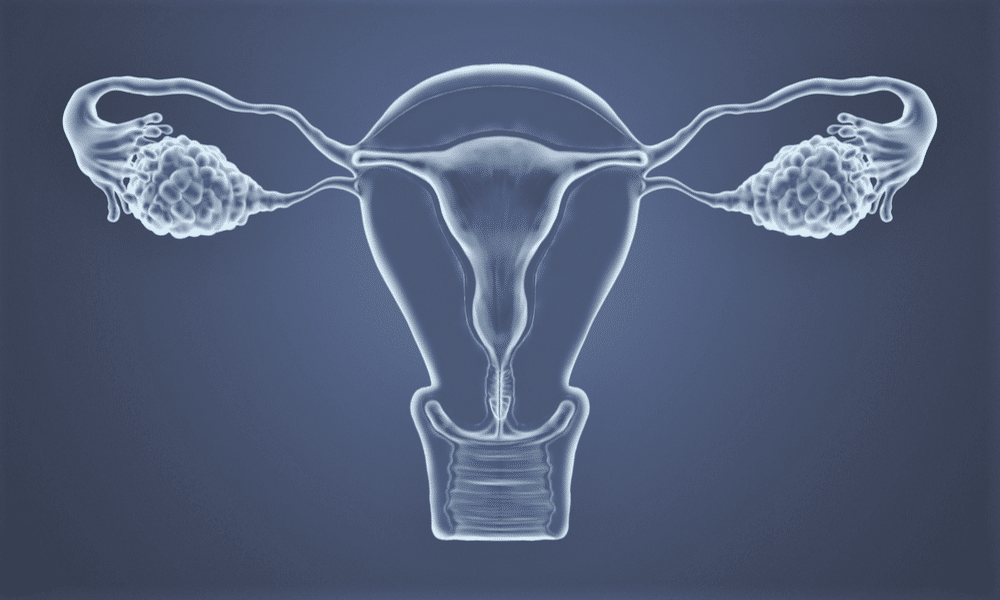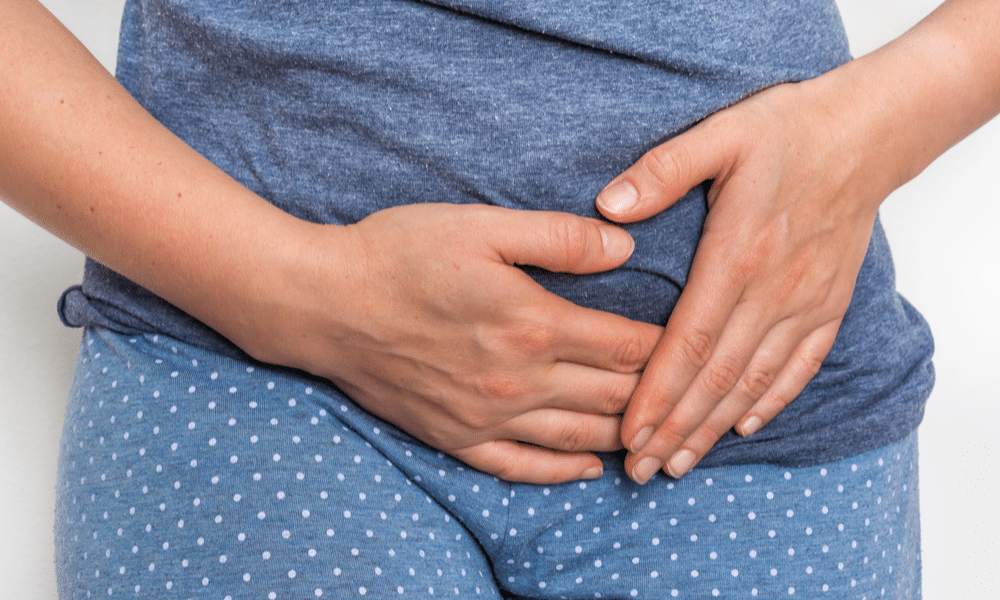What Is an Ovarian Cyst?
First of all, what is the difference between an ovarian cyst and a uterine fibroid?
A cyst is a fluid-filled sac. Cysts found in the pelvis usually come from the ovaries, but cysts can also develop inside a fallopian tube.
A fibroid is a solid smooth muscle growth that develops in the walls of the uterus – it is a lump of tissue, not a fluid-filled sac. Fibroids tend to grow in older women and are found in at least one-third of women over the age of 35. They are more common in women whose mothers or sisters have a history of fibroids, and in African American women. Fibroids can either grow into the wall of the uterus, or project out from the outer surface of the uterus, or they can grow into the endometrial cavity.
In a normal menstrual cycle, each month that a woman ovulates, a small ovarian cyst is formed, called a follicle. This is the sac which holds the egg (ovum); which usually measures 1.5 to 2 centimeters. Note, this is a normal and beneficial occurence; hence why they are referred to as “functional cysts” – they are a normal part of reproductive function.
However, the follicle may accumulate too much fluid and form a cyst that is greater than three centimeters. This can then cause mid-cycle pain and is what women commonly refer to as an “ovarian cyst.” After ovulation, the corpus luteum may also bleed into itself and also enlarge, forming a hemorrhagic cyst.
Dr. Judith Reichman says, “Here is my reassuring gynecologic statement: Functional cysts rarely become larger than six centimeters and should resolve and dissolve after two to three cycles. Most cysts are benign, especially those that occur during the reproductive years. 90 percent of simple cysts are functional and will disappear after five weeks.”
Most cysts don’t cause symptoms and are discovered on routine pelvic exam. However, cysts can cause intense pelvic pain if they rupture, twist, bleed, are pushed around (during intercourse or pelvic exam) or become large enough to press on adjacent structures. If the cyst undergoes torsion and twists or causes the ovary to twist, it can cause spasms of pain. Sudden or sharp pain may mean that the cyst has ruptured. Either torsion or rupture of the cyst can also cause fever, vomiting, and even symptoms of shock – because it is so sudden and so painful.
Natural Remedy For an Ovarian Cyst
Holistic treatment for ovarian cysts usually focuses on balancing the hormones. It is thought that the reason the cysts grow so large is due to hormonal imbalance. However, lesser known is the need to balance and align the structural function of the pelvis and reproductive organs.
Balancing Hormones
Dr. Jonathan V. Wright (MD) has a home remedy that is definitely worthwhile, using SSKI (super-saturated potassium iodide):
“It’s very likely that SSKI helps eliminate fibrocystic breast disease and ovarian cysts at least partly through it’s interaction with estrogens….which brings us to another important use for SSKI (and other forms of iodine such as “Lugol’s solution” and “di-atomic iodine”). All of these forms of iodine help your body to metabolize estrone (a slightly carcinogenic human estrogen) and 16-alpha-hydroxyestrone (a much more dangerous metabolite of human estrogen) into estriol, an “anti-carcinogenic” or at worst “neutral” form of human estrogen. I’ve reviewed literally hundreds of hormone tests in over 26 years which have proven this point. This testing and treatment usually requires the help of a physician skilled and knowledgeable in nutritional and natural medicine, who can also help with monitoring thyroid function.”
Dr. Wright recommends 6 – 8 drops of potassium iodide (SSKI) in a few ounces of water, once per day and treatment usually lasts 3 – 6 months.
Dr. Wright says, “One of our daughters and at least thirty other women I’ve worked with in nearly 30 years have helped ovarian cysts disappear within two to three months with the same quantity of SSKI. Again, make sure to monitor your thyroid function!”
As Dr. Wright cautions, since iodine impacts thyroid function, if you are using it for longer than 2-3 weeks, you need to let your doctor know so she can monitor your thyroid function.
I did a fantastic podcast with Dr. Wendy Ellis, one of Dr. Wright’s colleagues at his clinic, specifically about balancing hormones after age 35. So be sure and check that out, especially if you cannot afford to see a hormone specialist.
Pelvic Structural Alignment
It is also valuable to investigate the physical, structural aspect your pelvis and reproductive organs to ensure that all is balanced, nothing is getting pinched or restricted, nothing is locked up, no ligaments are trapped, etc.
Basically, if you have given birth (vaginal or caesarean) your pelvis needs to be released and balanced! Watch this video I did with Physical Therapist Mary Cox to understand how interrelated all these things are. Although this video focuses on scar tissue, it will give you a good overview on why it is important to get all the components of your pelvis released and moving freely:

There are a few different therapy modalities you can use to help you free up your pelvis and reproductive organs. In each of these modalities, you need to find a practitioner who specializes in the pelvis and female reproductive organs:
- Craniosacral
- Myofascial Release
- Osteopathy
- Physical Therapy (or Physiotherapy)
- Advanced bodyworkers or chiropractors
If you prefer to treat yourself, then the Body Rolling techniques by Yamuna are wonderful and she has very specific protocols for the pelvis – you can attend a workshop from a local certified practitioner, or order a DVD.
Natural Painkillers
If the pain gets bad, know that you do have alternatives to drug painkillers (and their side effects). You can use white willow bark, which has traditionally been used by North American Indians to treat pain.
Or you can apply a hot castor oil pack to your abdomen or area of pain – it will be most effective if you do this at the first sign of pain or discomfort. The oil is also absorbed into the lymphatic circulation to provide a soothing, cleansing and nourishing treatment, which stimulates immune function and tones internal organs.
A castor oil pack has many applications, and has also been used to treat non-malignant uterine fibroids, ovarian cysts, headaches, liver disorders, constipation, diarrhea, intestinal disorders, gallbladder inflammation or stones, poor elimination, night time urinary frequency, inflamed joints, and general detoxification.
Hot Castor Oil Pack
I have used a hot castor oil pack repeatedly on myself and many of my family members for many reasons (usually pain, cramping or spasming) and it has never failed to provide significant, and usually total, relief.
Materials Needed:
- Expeller-pressed castor oil
- White cotton flannel twice the size of your abdomen (so you can fold it in half and cover your abdomen)
- Hot water bottle or heating pad
- Thin dish towel (or baby’s burp cloth, or old diaper cloth, etc)
- Sheet of plastic (a garbage bag will work)
- Old bath towel
- Old t-shirt and sweat pants
Procedure:
Cut a piece of plastic that will cover the flannel with at least 1 to 2 inches extra around the border of the flannel. Drizzle approximately 1/4 cup of castor oil onto the flannel, then fold it in half to saturate. The pack should not be dripping with oil – it should have just enough oil to make a slight oil mark on furniture, as if you were going to polish it.
NOTE: The first couple of weeks you use the pack you will have to apply a tablespoon or so of oil about every 3 to 4 days. Eventually the pack will be saturated enough that reapplication of oil should only be needed every couple of weeks.
Lay out an old towel on the surface you will be lying on. Castor oil stains, and you want to avoid getting it on sheets, carpet, or clothing. Lie on your back and place the saturated flannel on your abdomen. Cover the flannel with plastic. Then place the thin dish towel or old cloth over the plastic. Place a hot water bottle or heating pad over the thin towel and plastic, and wrap the bath towel around you to hold it all snug.
Relax for 30 to 60 minutes. This is an excellent time to practice visualization, meditation, or deep breathing exercises, listen to classical music or sleep – or to watch a good movie!
When finished, you can remove the oil with warm water and soap in the shower. I prefer to just wipe my abdomen with an old towel and leave the oil on my skin to be completely absorbed while I sleep (I apply the pack at night, before bed – but I sleep on a towel or old sheets, as even the oil residue can stain).
Store the pack in a large zip-lock bag. You can reuse it many times, adding more oil as needed to keep the pack saturated. Replace the pack after it begins to change color (usually several months). Do not wash the flannel – just throw it out.
Hot Magnesium Bath
Magnesium is nature’s muscle relaxant. It plays an important role in the production and transfer of energy, in muscle contraction and relaxation and in nerve conduction. However, if you take magnesium orally, it will irritate your colon and act as a laxative. This is not a good idea if you don’t need a laxative, or if you are prone to loose bowel movements or diarrhea.
The solution is to use either transdermal magnesium (absorbed through the skin), or nanoparticle (angstrom-sized) magnesium that is absorbed through the mucous membranes of the mouth, and so does not require digestion.
For now, let’s look at transdermal methods of applying and absorbing magnesium. Fill your bathtub with hot water and then add 2 oz of magnesium oil (which is supersaturated magnesium chloride condensed from seawater). Since the magnesium is going in through your skin, it is not passing through your digestive system, nor triggering a bowel movement.
Now, since magnesium oil is not cheap, here’s what I do to get the same effect, but cut the price considerably. I add only one ounce of transdermal magnesium along with 1 cup of Epsom salts (which is much cheaper – especially if you buy it at Costco) to my bathwater. I find the two work well together, and I get a nice infusion of magnesium for a much cheaper price than using only magnesium oil.
If you’re on a really tight budget, you can substitute 1 tbsp. of magnesium oxide instead of the magnesium oil. So you would use 1 tbsp. of magnesium oxide and 1 cup of Epsom salts together in your bath. Magnesium oxide doesn’t work as well as magnesium, but if money’s really tight, it will still provide relief.
If you also want to make your bath smell nice (which can help you relax), add any essential oil that you like directly to your tub, or to your Epsom salts and stir well. Add about 5 to 10 drops to each cup of Epsom salts, or add the oil directly your bath. To relax, add essential oils of lavender, rose, bergamot or jasmine. To invigorate (or if you have a cold), add essential oils of rosemary, eucalyptus, peppermint or spruce.


